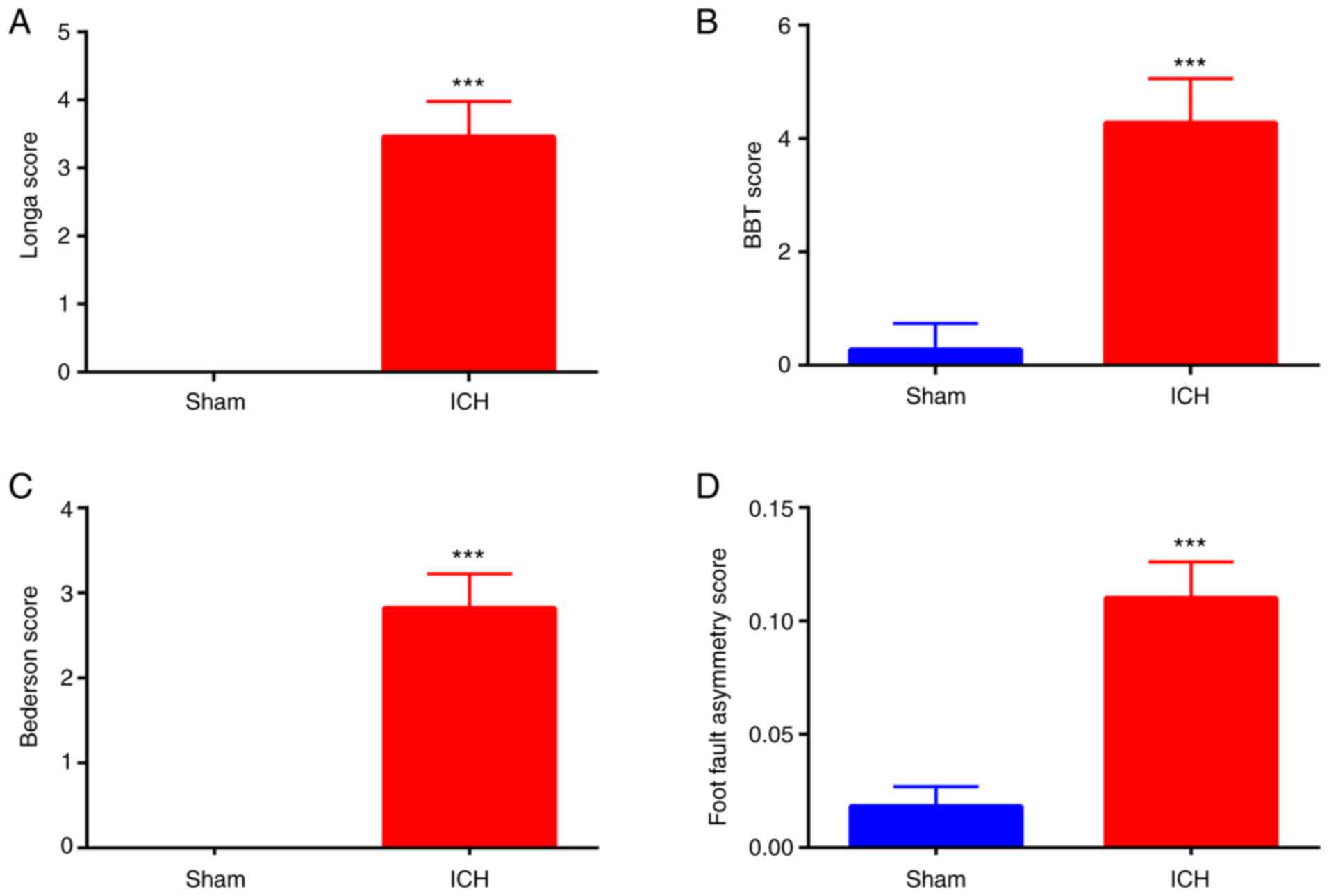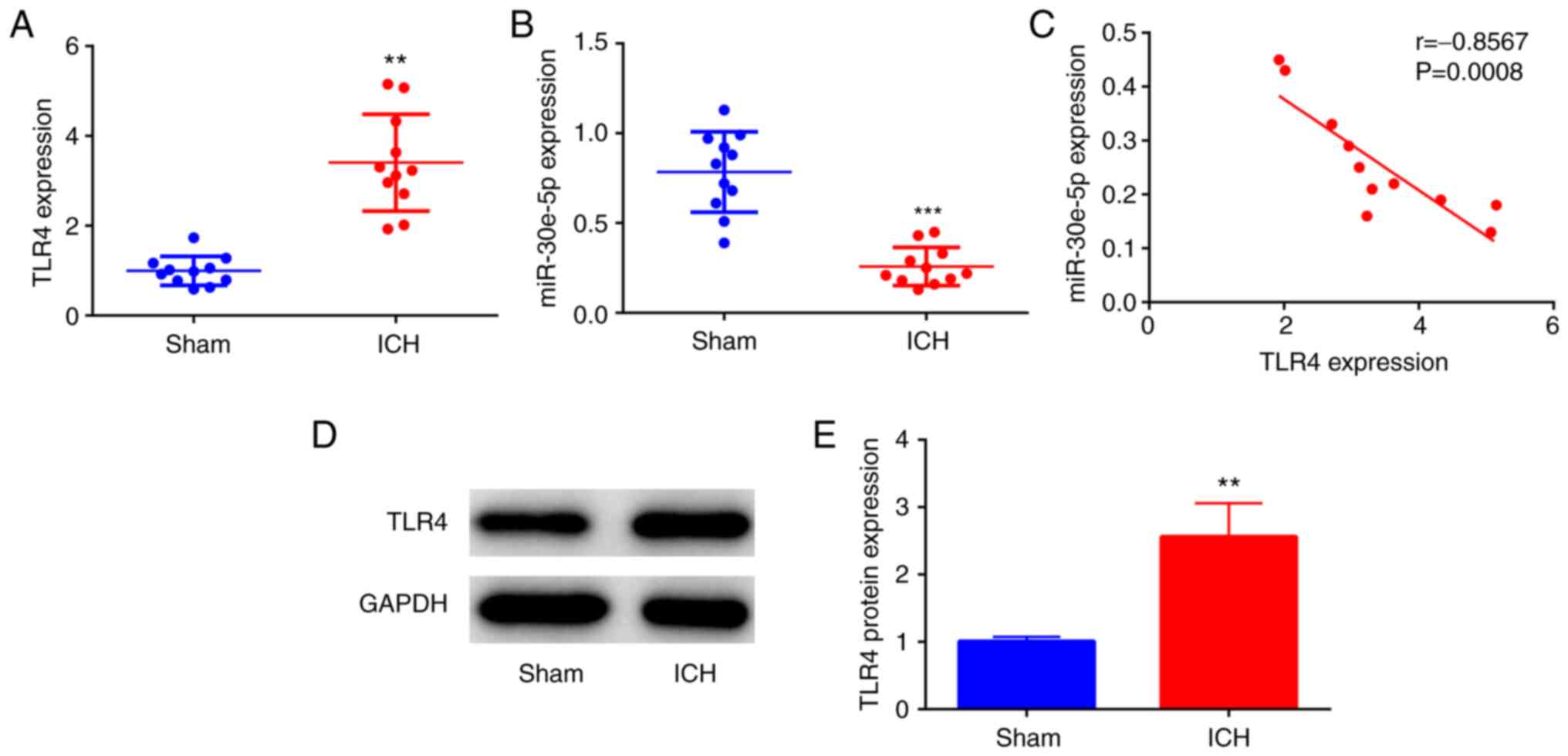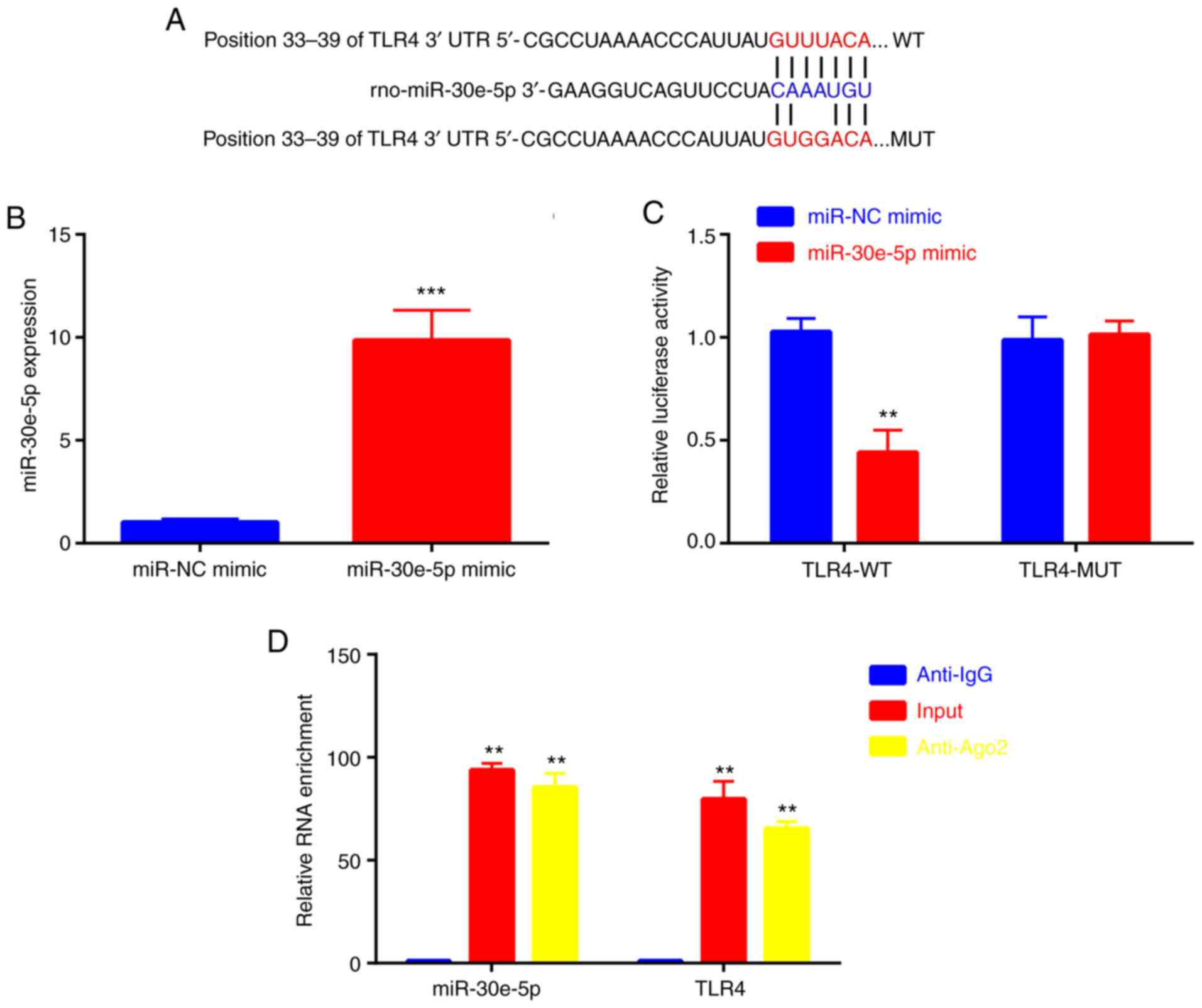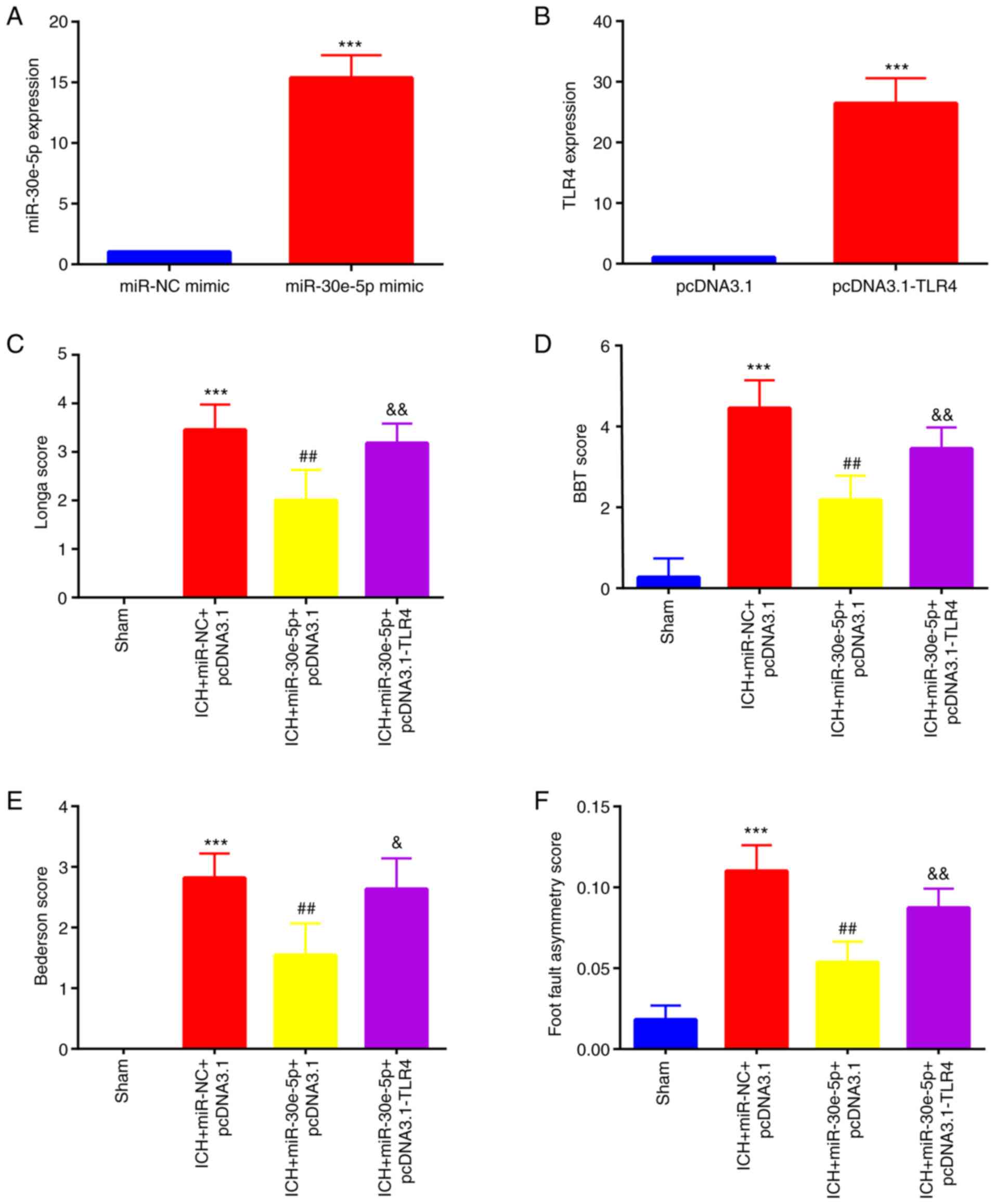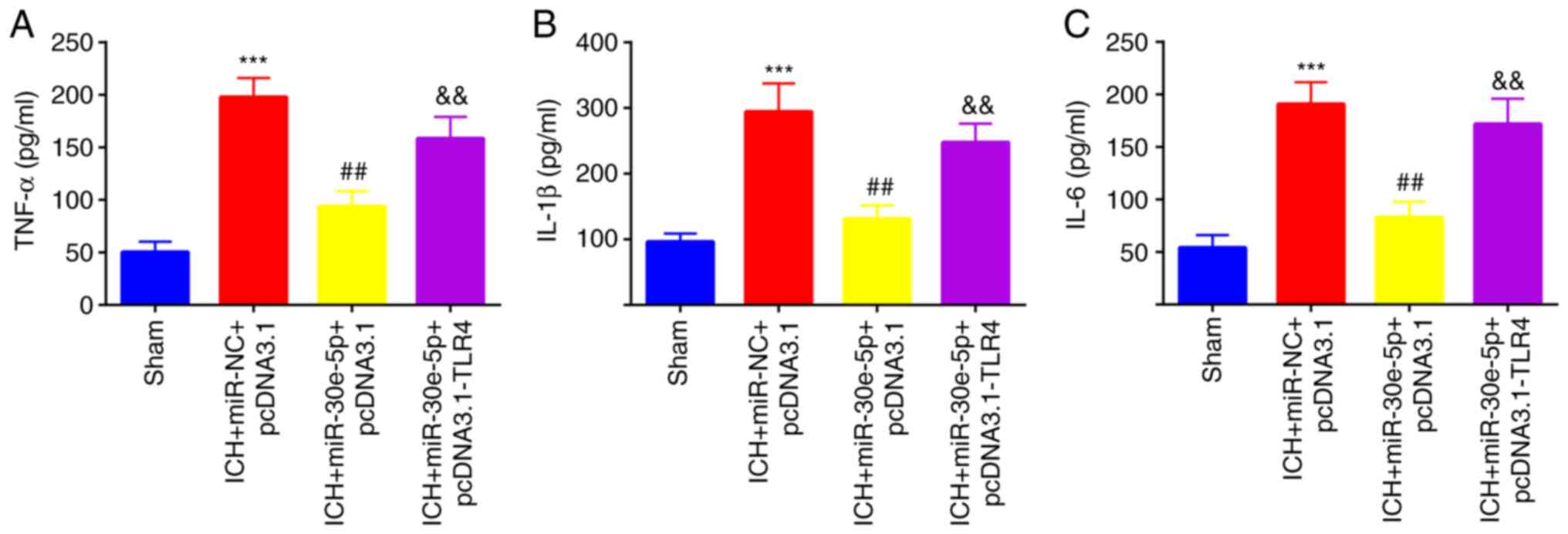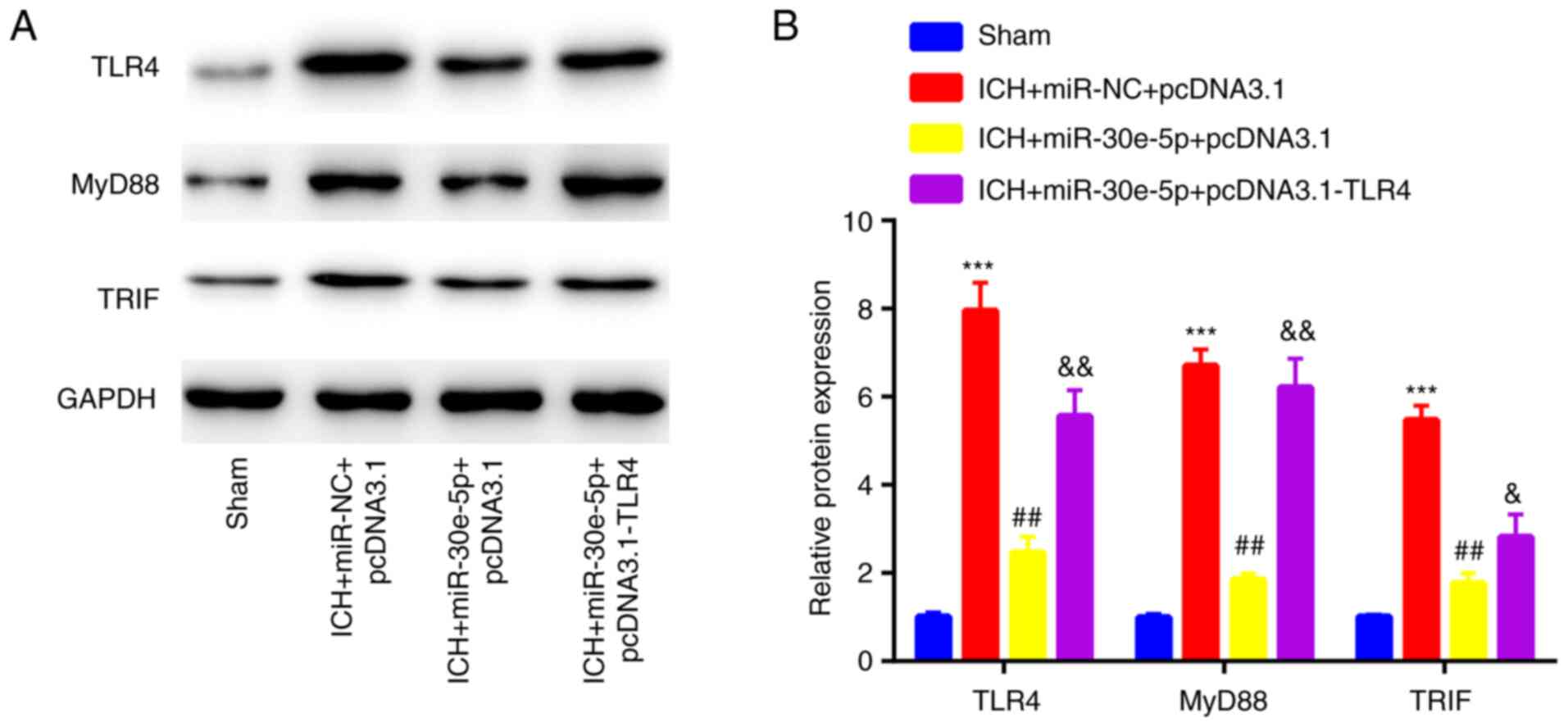|
1
|
Xi G, Strahle J, Hua Y and Keep RF:
Progress in translational research on intracerebral hemorrhage: Is
there an end in sight? Prog Neurobiol. 115:45–63. 2014.PubMed/NCBI View Article : Google Scholar
|
|
2
|
Ziai WC and Carhuapoma JR: Intracerebral
hemorrhage. Continuum (Minneap Minn). 24:1603–1622. 2018.PubMed/NCBI View Article : Google Scholar
|
|
3
|
van Asch CJ, Luitse MJ, Rinkel GJ, van der
Tweel I, Algra A and Klijn CJ: Incidence, case fatality, and
functional outcome of intracerebral haemorrhage over time,
according to age, sex, and ethnic origin: A systematic review and
meta-analysis. Lancet Neurol. 9:167–176. 2010.PubMed/NCBI View Article : Google Scholar
|
|
4
|
Qureshi AI, Tuhrim S, Broderick JP, Batjer
HH, Hondo H and Hanley DF: Spontaneous intracerebral hemorrhage. N
Engl J Med. 344:1450–1460. 2001.PubMed/NCBI View Article : Google Scholar
|
|
5
|
Rymer MM: Hemorrhagic stroke:
Intracerebral hemorrhage. Mo Med. 108:50–54. 2011.PubMed/NCBI
|
|
6
|
Rodríguez JA, Sobrino T, López-Arias E,
Ugarte A, Sánchez-Arias JA, Vieites-Prado A, de Miguel I, Oyarzabal
J, Páramo JA, Campos F, et al: cM352 reduces brain damage and
improves functional recovery in a rat model of intracerebral
hemorrhage. J Am Heart Assoc. 6(e006042)2017.PubMed/NCBI View Article : Google Scholar
|
|
7
|
Sheth KN and Rosand J: Targeting the
immune system in intracerebral hemorrhage. JAMA Neurol.
71:1083–1084. 2014.PubMed/NCBI View Article : Google Scholar
|
|
8
|
Zhou Y, Wang Y, Wang J, Anne Stetler R and
Yang QW: Inflammation in intracerebral hemorrhage: From mechanisms
to clinical translation. Prog Neurobiol. 115:25–44. 2014.PubMed/NCBI View Article : Google Scholar
|
|
9
|
Rivest S: Regulation of innate immune
responses in the brain. Nat Rev Immunol. 9:429–439. 2009.PubMed/NCBI View
Article : Google Scholar
|
|
10
|
Fang H, Wang PF, Zhou Y, Wang YC and Yang
QW: Toll-like receptor 4 signaling in intracerebral
hemorrhage-induced inflammation and injury. J Neuroinflammation.
10(27)2013.PubMed/NCBI View Article : Google Scholar
|
|
11
|
Zhang D, Shen X, Pang K, Yang Z and Yu A:
VSIG4 alleviates intracerebral hemorrhage induced brain injury by
suppressing TLR4-regulated inflammatory response. Brain Res Bull.
176:67–75. 2021.PubMed/NCBI View Article : Google Scholar
|
|
12
|
Sansing LH, Harris TH, Welsh FA, Kasner
SE, Hunter CA and Kariko K: Toll-like receptor 4 contributes to
poor outcome after intracerebral hemorrhage. Annal Neurol.
70:646–656. 2011.PubMed/NCBI View Article : Google Scholar
|
|
13
|
Wang YC, Wang PF, Fang H, Chen J, Xiong XY
and Yang QW: Toll-like receptor 4 antagonist attenuates
intracerebral hemorrhage-induced brain injury. Stroke.
44:2545–2552. 2013.PubMed/NCBI View Article : Google Scholar
|
|
14
|
Ambros V: The functions of animal
microRNAs. Nature. 431:350–355. 2004.PubMed/NCBI View Article : Google Scholar
|
|
15
|
Liu DZ, Tian Y, Ander BP, Xu H, Stamova
BS, Zhan X, Turner RJ, Jickling G and Sharp FR: Brain and blood
microRNA expression profiling of ischemic stroke, intracerebral
hemorrhage, and kainate seizures. J Cereb Blood Flow Metab.
30:92–101. 2010.PubMed/NCBI View Article : Google Scholar
|
|
16
|
Wang Y, Song Y, Pang Y, Yu Z, Hua W, Gu Y,
Qi J and Wu H: miR-183-5p alleviates early injury after
intracerebral hemorrhage by inhibiting heme oxygenase-1 expression.
Aging (Albany NY). 12:12869–12895. 2020.PubMed/NCBI View Article : Google Scholar
|
|
17
|
Nie H, Hu Y, Guo W, Wang W, Yang Q, Dong
Q, Tang Y, Li Q and Tang Z: miR-331-3p inhibits inflammatory
response after intracerebral hemorrhage by directly targeting
NLRP6. Biomed Res Int. 2020(6182464)2020.PubMed/NCBI View Article : Google Scholar
|
|
18
|
Wang J, Zhu Y, Jin F, Tang L and He Z and
He Z: Differential expression of circulating microRNAs in blood and
haematoma samples from patients with intracerebral haemorrhage. J
Int Med Res. 44:419–432. 2016.PubMed/NCBI View Article : Google Scholar
|
|
19
|
Zhang S, Li G, Liu C, Lu S, Jing Q, Chen
X, Zheng H, Ma H, Zhang D, Ren S, et al: miR-30e-5p represses
angiogenesis and metastasis by directly targeting AEG-1 in squamous
cell carcinoma of the head and neck. Cancer Sci. 111:356–368.
2020.PubMed/NCBI View Article : Google Scholar
|
|
20
|
Zhang Z, Qin H, Jiang B, Chen W, Cao W,
Zhao X, Yuan H, Qi W, Zhuo D and Guo H: miR-30e-5p suppresses cell
proliferation and migration in bladder cancer through regulating
metadherin. J Cell Biochem. 120:15924–15932. 2019.PubMed/NCBI View Article : Google Scholar
|
|
21
|
Mo B, Wu X, Wang X, Xie J, Ye Z and Li L:
miR-30e-5p mitigates hypoxia-induced apoptosis in human stem
cell-derived cardiomyocytes by suppressing Bim. Int J Biol Sci.
15:1042–1051. 2019.PubMed/NCBI View Article : Google Scholar
|
|
22
|
Chen Y, Yin Y and Jiang H: miR-30e-5p
alleviates inflammation and cardiac dysfunction after myocardial
infarction through targeting PTEN. Inflammation. 44:769–779.
2021.PubMed/NCBI View Article : Google Scholar
|
|
23
|
Li W, Li X, Li T, Jiang MG, Wan H, Luo GZ,
Feng C, Cui X, Teng F, Yuan Y, et al: Genetic modification and
screening in rat using haploid embryonic stem cells. Cell Stem
Cell. 14:404–414. 2014.PubMed/NCBI View Article : Google Scholar
|
|
24
|
Li T, Shuai L, Mao J, Wang X, Wang M,
Zhang X, Wang L, Li Y, Li W and Zhou Q: Efficient production of
fluorescent transgenic rats using the piggyBac Transposon. Sci Rep.
6(33225)2016.PubMed/NCBI View Article : Google Scholar
|
|
25
|
Jung KH, Chu K, Jeong SW, Han SY, Lee ST,
Kim JY, Kim M and Roh JK: HMG-CoA reductase inhibitor,
atorvastatin, promotes sensorimotor recovery, suppressing acute
inflammatory reaction after experimental intracerebral hemorrhage.
Stroke. 35:1744–1749. 2004.PubMed/NCBI View Article : Google Scholar
|
|
26
|
Ge XT, Lei P, Wang HC, Zhang AL, Han ZL,
Chen X, Li SH, Jiang RC, Kang CS and Zhang JN: miR-21 improves the
neurological outcome after traumatic brain injury in rats. Sci Rep.
4(6718)2014.PubMed/NCBI View Article : Google Scholar
|
|
27
|
Bachour SP, Hevesi M, Bachour O, Sweis BM,
Mahmoudi J, Brekke JA and Divani AA: Comparisons between Garcia,
Modo, and Longa rodent stroke scales: Optimizing resource
allocation in rat models of focal middle cerebral artery occlusion.
J Neurol Sci. 364:136–140. 2016.PubMed/NCBI View Article : Google Scholar
|
|
28
|
Yue X, Liu L, Yan H, Gui Y, Zhao J and
Zhang P: Intracerebral hemorrhage induced brain injury is mediated
by the interleukin-12 receptor in rats. Neuropsychiatr Dis Treat.
16:891–900. 2020.PubMed/NCBI View Article : Google Scholar
|
|
29
|
Liu H, Shen H, Harvey BK, Castillo P, Lu
H, Yang Y and Wang Y: Post-treatment with amphetamine enhances
reinnervation of the ipsilateral side cortex in stroke rats.
NeuroImage. 56:280–289. 2011.PubMed/NCBI View Article : Google Scholar
|
|
30
|
Han J, Zhang J, Zhong Z, Li Z, Pang W, Hu
J and Chen L: Gualou Guizhi decoction promotes neurological
functional recovery and neurogenesis following focal cerebral
ischemia/reperfusion. Neural Regen Res. 13:1408–1416.
2018.PubMed/NCBI View Article : Google Scholar
|
|
31
|
Livak KJ and Schmittgen TD: Analysis of
relative gene expression data using real-time quantitative PCR and
the 2(-Delta Delta C(T)) method. Methods. 25:402–408.
2001.PubMed/NCBI View Article : Google Scholar
|
|
32
|
Molteni M, Gemma S and Rossetti C: The
role of toll-like receptor 4 in infectious and noninfectious
inflammation. Mediators Inflamm. 2016(6978936)2016.PubMed/NCBI View Article : Google Scholar
|
|
33
|
Laudato S, Patil N, Abba ML, Leupold JH,
Benner A, Gaiser T, Marx A and Allgayer H: P53-induced miR-30e-5p
inhibits colorectal cancer invasion and metastasis by targeting
ITGA6 and ITGB1. Int J Cancer. 141:1879–1890. 2017.PubMed/NCBI View Article : Google Scholar
|
|
34
|
Dieter C, Assmann TS, Costa AR, Canani LH,
de Souza BM, Bauer AC and Crispim D: MiR-30e-5p and MiR-15a-5p
expressions in plasma and urine of type 1 diabetic patients with
diabetic kidney disease. Front Genet. 10(563)2019.PubMed/NCBI View Article : Google Scholar
|
|
35
|
Dong Y, Fan X, Wang Z, Zhang L and Guo S:
Circ_HECW2 functions as a miR-30e-5p sponge to regulate LPS-induced
endothelial-mesenchymal transition by mediating NEGR1 expression.
Brain Res. 1748(147114)2020.PubMed/NCBI View Article : Google Scholar
|
|
36
|
Wang SD, Cui YJ, Xu JQ and Gao H:
miR-140-5p attenuates neuroinflammation and brain injury in rats
following intracerebral hemorrhage by targeting TLR4. Inflammation.
42:1869–1877. 2019.PubMed/NCBI View Article : Google Scholar
|
|
37
|
Lin S, Yin Q, Zhong Q, Lv FL, Zhou Y, Li
JQ, Wang JZ, Su BY and Yang QW: Heme activates TLR4-mediated
inflammatory injury via MyD88/TRIF signaling pathway in
intracerebral hemorrhage. J Neuroinflamm. 9(46)2012.PubMed/NCBI View Article : Google Scholar
|
|
38
|
Miyake K: Endotoxin recognition molecules
MD-2 and toll-like receptor 4 as potential targets for therapeutic
intervention of endotoxin shock. Curr Drug Targets Inflamm Allergy.
3:291–297. 2004.PubMed/NCBI View Article : Google Scholar
|
|
39
|
Takeda K and Akira S: TLR signaling
pathways. Semin Immunol. 16:3–9. 2004.PubMed/NCBI View Article : Google Scholar
|
|
40
|
Zhang W, Tian Y, Gao Q, Li X, Li Y, Zhang
J, Yao C, Wang Y, Wang H, Zhao Y, et al: Inhibition of apoptosis
reduces diploidization of haploid mouse embryonic stem cells during
differentiation. Stem Cell Reports. 15:185–197. 2020.PubMed/NCBI View Article : Google Scholar
|















